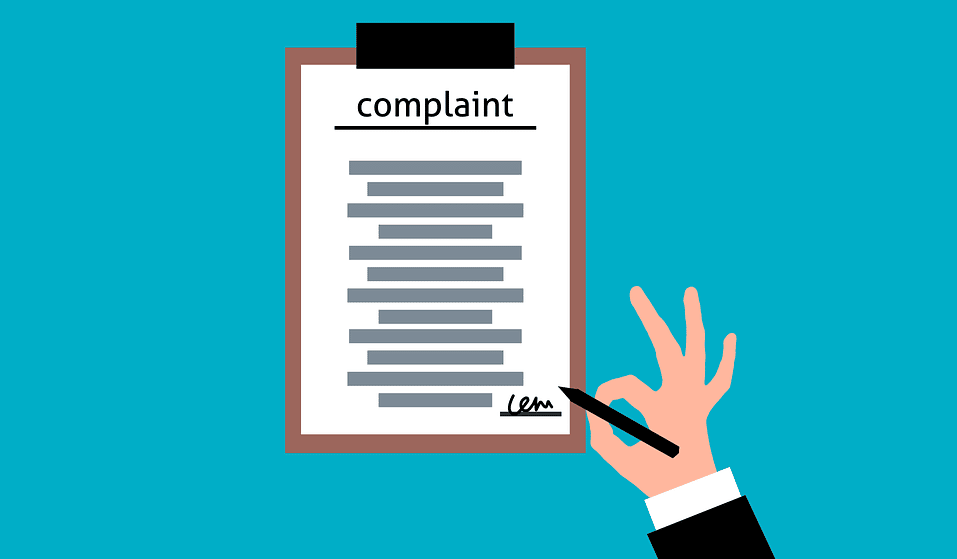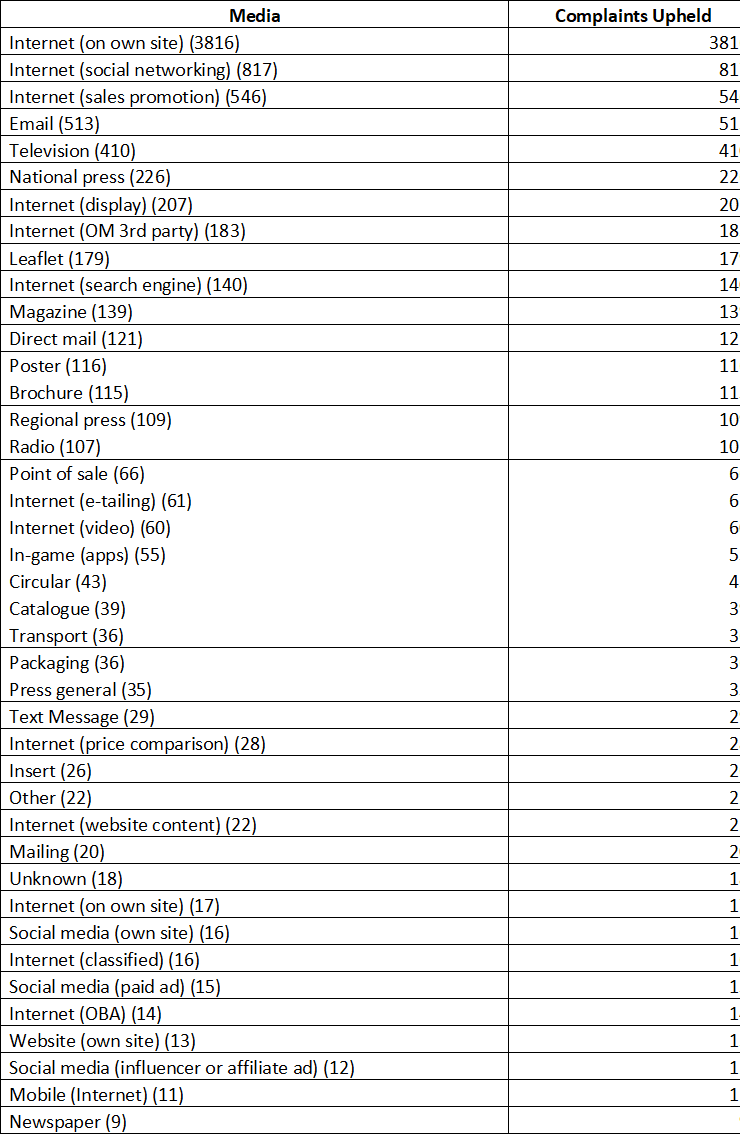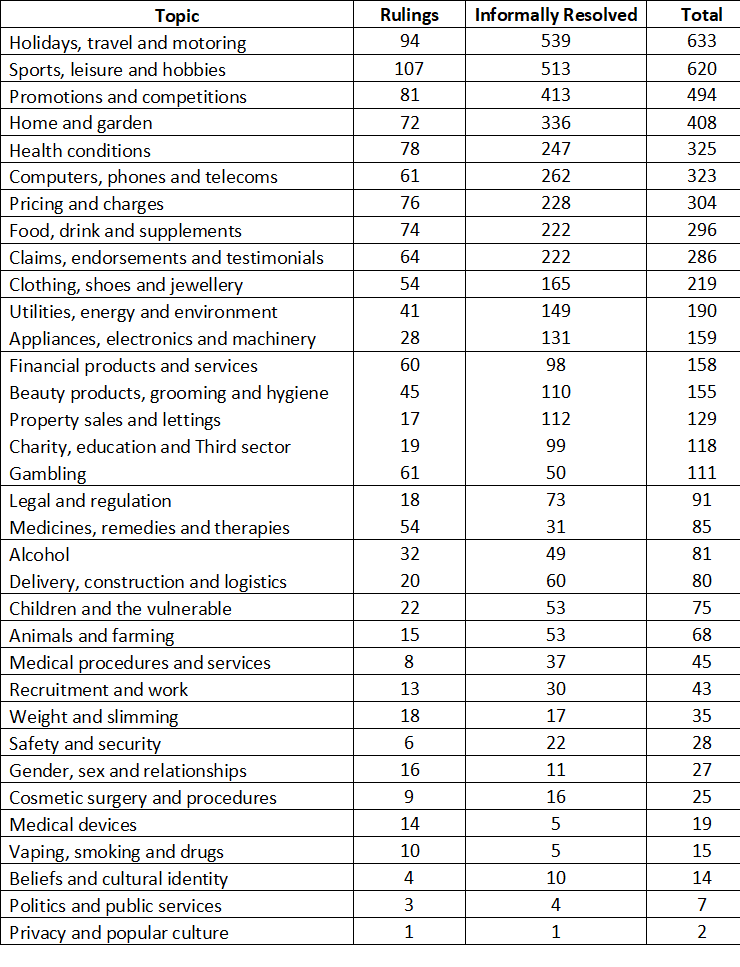
Retailers are being forced to push boundaries in the hope of capturing customers’ attention through advertising in 2021. Research conducted by Solopress demonstrates that certain advertising types and industries have fallen foul of the ASA more often than others. Whilst most brands can be forgiven, their marketing mistakes can never be forgotten.
Key Findings
● The average adult in the UK now spends over 5 hours a day in front of a screen in 2021 and is exposed to over 5,000 marketing messages per day
● In the 7,950 complaints that were upheld by the ASA in the last five years, nearly half (48%) were concerning adverts on a retailer’s own website
● Digital media occupied seven out of the top ten positions for media that received complaints
● The industry that was ruled to have broken the ASA rules most often in the last five years was holidays, travel and motoring, with 94 rulings and another 539 cases resolved informally
● Notable offenders in this list include a YouTube advert for PrettyLittlething.com that objectified women and presented them in an ‘overly-sexualised’ fashion, and a billboard poster for BrewDog that landed them in hot water for referring to expletives in media that could be seen by children
● Adverts which most commonly violate the ASA’s guidelines are those that are misleading, with 91% of rulings applying to misleading ads
The Most Commonly Complained About Media
In the 7,950 complaints that were upheld by the ASA in the last five years, nearly half (48%) were concerning adverts on a retailer’s own website, highlighting the shift away from traditional media consumption (TV, radio) towards more digital media (websites, social media, search engines). In fact, digital media occupied seven out of the top ten positions for media that received complaints, with TV, national press and leaflets the only traditional media to make the top ten.
Social media influencers don’t feature as heavily on the list as you would expect, especially following a recent investigation showing that many influencers were not adhering to the rules around advertising (Competition and Markets Authority (CMA)), and there being calls for social media sites to do more to protect consumers from being misled. A recent ASA case found an Instagram post by former reality TV star Lauren Goodger was not clearly marked as an advert, despite her being paid to make the post. The post about a foreign exchange trading tips service did not feature the label ‘£ad’, or a similar, prominent identifier; nor was there any evidence to support the misleading claims about profits in the ad. One potential reason for the relatively low number of rulings against influencers is that influencers were ‘hiding’ the disclosure of their advertisements from their followers, making it difficult for a consumer to ascertain whether a post is an advert or just an organic post and, therefore, whether or not a complaint can be made.
Despite the heavy skew towards digital media, businesses are still regularly found to be in breach of ASA regulations for more traditional media such as leaflets and posters. For example, a horse racing tipster was found in violation of the guidelines by distributing a piece of direct mail to recipients that stated if they used the tipster service then they were guaranteed to win money from the bets they placed. A branch of Hungry Horse Pub also found themselves in hot water with the ASA for distributing a print leaflet promoting a “£5 off and a free drink” offer that referred to alcoholic drinks but was distributed to primary school children in their school book-bags, thereby breaching advertising codes.

The Most Commonly Complained About Topics
The industry that was ruled to have broken the ASA rules most often in the last five years was holidays, travel and motoring, with 94 rulings and another 539 cases resolved informally*. Some notable offenders in this list include a YouTube advert for PrettyLittlething.com that objectified women and presented them in an ‘overly-sexualised’ fashion, and a billboard poster for BrewDog that landed them in hot water for referring to expletives in media that could be seen by children.

* Although sports, leisure and hobbies received more rulings (107) than holidays, travel and motoring (94), we have also included informal resolutions in our ranking, whereby companies and organisations, following receipt of a complaint, agreed to amend or withdraw their ad without the need for a formal investigation.
The Most Commonly Complained About Issues
While we are more likely to remember an advert that was offensive or distasteful, it seems that the adverts which most commonly violate the ASA’s guidelines are those that are misleading, with 91% of rulings applying to misleading ads.

There are several household names that are judged to have provided misleading information in ads over the past five years. Roofoods (better known as Deliveroo), received 300 complaints for their ‘magic bag’ TV advert, whereby it was implied that food from multiple restaurants could be placed in one order (this isn’t possible on the app). Procter & Gamble also landed themselves in hot water when making false medicinal claims about one of their Oral B toothpaste products. Finally, Paddy Power were judged to have breached ASA regulations when a TV ad aired in 2017 seemed to suggest that it was normal behaviour for people to gamble in their place of work.
Glen Eckett, Head of Marketing at Solopress , said :“There are so many different platforms for brands to utilise this day in age. We are no longer limited to traditional forms of advertising; brands now have far more creative freedom and direct exposure to their target market. With all of this freedom, it does mean that brands must take accountability for responsible advertising. Following ASA guidelines to ensure consumers are informed and given the right information about a brand, product or service should always be a priority.”
Methodology
All data was sourced from the ASA, analysing each ruling from January 1st 2016 to July 31st 2021. Please note that not all rulings listed were necessarily upheld and that when analysing the most complained about topics and forms of media, the topic and/or media weren’t always noted in the ruling, and sometimes there may be some overlap between categories. For example, an advert that was classed as misleading could also be categorised as irresponsible.
Source: https://www.solopress.com/
